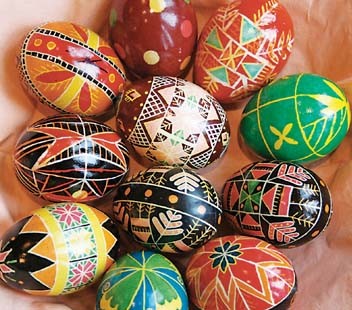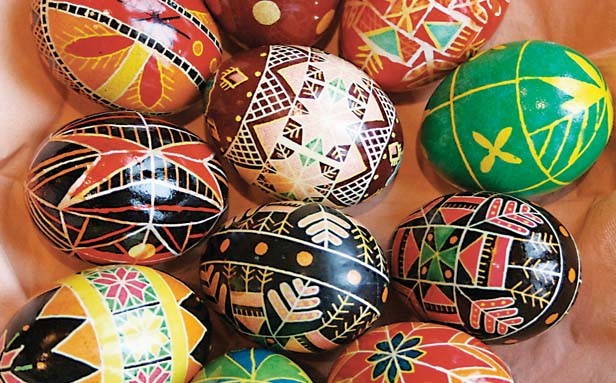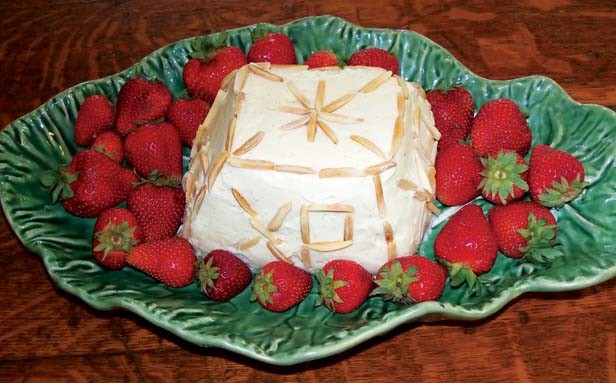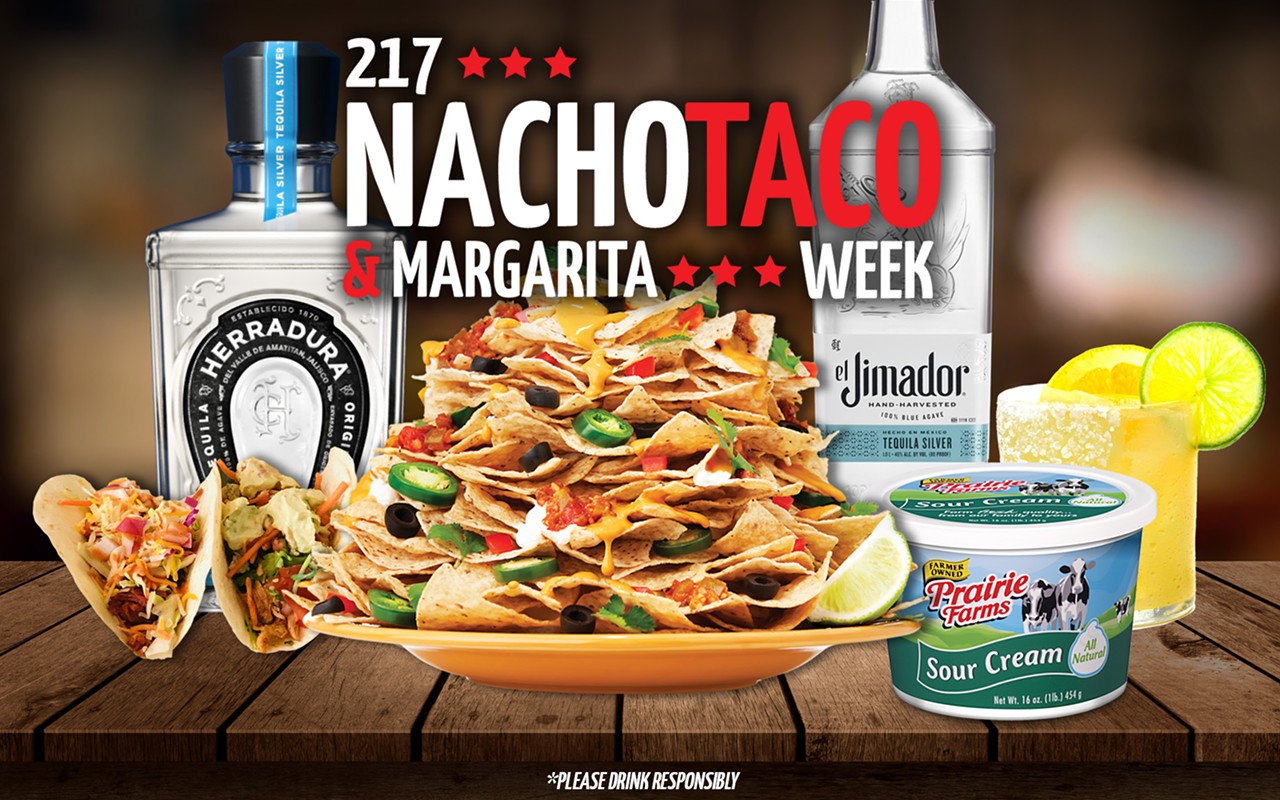For much of the Western world, the biggest Christian celebration is Christmas – not least these days because it’s become so commercialized. But in other areas Christ’s Resurrection – a.k.a. Easter – is cause for the biggest celebration. Nowhere is that more true than in Russia, and in Russian Orthodox congregations worldwide.
It’s not hard to imagine why. After the notoriously bleak and harsh Russian winters, celebrating resurrection – spring – the renewal of life – would be even more welcome than in warmer lands.
Much of Russia’s Easter celebrations actually predate Christianity. Not least among them are Easter eggs. Yes, people all over the world decorate Easter eggs, but Russia and parts of its former empire – especially the Ukraine – developed egg decoration into a genuine art form. Even in pre-Christian times, people decorated eggs. They believed eggs held great power, and symbolized the release of the Earth from winter’s grip. Eggs signified new hope, new life and prosperity. Christianity added the promise of resurrection and eternal life.
Eggs reached their highest, most costly art form with those commissioned by Czars, their families, and Russian aristocracy from imperial jeweler Karl Fabergé. Made of enamel and precious metals, festooned with diamonds and other jewels, the eggs usually opened to a surprise – a twirling music box, a miniaturization of a lauded warship, or one with a horizontal timekeeping movement. Fabergé’s techniques are lost; today those imperial eggs are priceless.
Gorgeous Ukrainian Easter eggs, made with real eggs and called Pysanky, may be less costly, but are also fabulously intricate and time-consuming creations.
Linda Rubba is a longtime Springfield resident, but she learned the art of creating Pysanky in her native Minnesota, and still gets her supplies there (www.ukrainiangiftshop.com). The process involves first lightly tracing designs (mostly geometrical) onto the eggs with a pencil. Then the parts to be kept white are coated with beeswax with a special tool called a Kistka. Kistkas are tiny metal funnels that come in varying tip sizes. They’re attached to wooden holders with copper wire. These days, there are electric versions available, but the originals are heated over a candle flame, then the beeswax is scooped into the hot funnel. After the first beeswax application, the egg is dipped into the lightest color – yellow – and allowed to dry. Next the design parts that are to stay yellow are coated, and the egg dipped in orange dye – then red, and finally black. Finally the eggs are gently warmed over a candle and the wax wiped away. Other color combinations are possible, such as white/yellow/blue/ green. Many designs are symbolic: a cross-hatch (net) implies “fishing for men;” a ladder indicates prayer; triangles, the Holy Trinity; an eight-pointed star, an ancient Christ symbol; and many more.
Watching Rubba make her gorgeous eggs was fascinating, but it wasn’t until I tried it myself that I truly understood how exacting the process is: my effort looked as if it had been made by a drunken spider!
Pysanky are now made throughout other parts of the former Russian Empire/Soviet Union; some designs are specific to various areas. But they aren’t meant to be eaten. The dyes are inedible, and the decorated eggs saved for years. But other Russian Easter creations are both visually appealing and delectably consumable. I knew and had made some, but for more information, I turned to Galena Meklina.
Meklina and her husband, Sasha, have lived in Springfield for more than 16 years. Both are from St. Petersburg, Russia, and worked in neighboring offices there for years before they retired. But they met and married after emigrating here. Their cheerful and charming apartment is filled with family pictures and tapestries of St. Petersburg, easily Russia’s most beautiful city. Galena taught German to Russian students and her English is quite fluent; Sasha’s less so, but his infectious, jolly smiles are warm enough to melt the most frigid Russian winter. Both are of Russian/Jewish descent and don’t observe Russian Easter traditions. But earlier that day, Galena had phoned a “real Christian believer friend in St. Petersburg who follows all the rituals” and was prepared with extensive notes and recipes.
Pysanky are now made throughout Russia, with designs specific to different areas. They, along with a sweet cheese creation, Pashka, and a towering, cylindrical iced yeast bread with raisins and candied fruit, Kulich, are taken to church to be blessed.
Easter savory dishes also usually include Bushenina, a pork shoulder roast studded with slivers of garlic and carrot; and Studin, a veal or beef aspic made beautiful with mosaic-like cutouts of hardboiled egg, carrots and sometimes other vegetables.
Some of what Galena showed me had little to do with Russian Easter, but much to do with Russian generosity and hospitality, including a 1953 cookbook with gorgeous hand-colored photos meant to display Soviet bounty, which unfortunately was published during a year of famine. I left armed with recipes and Galena’s notes, and filled with some of her specialties: a beet, carrot and apple salad; pickled cabbage, Russian pickled herring and baked goods.
Contact Julianne Glatz at [email protected].
RealCuisine Recipe
Pashka
I’ve been making Pashka for decades, ever since first reading about Russian Easters in an old, now collectible Time-Life book series, Foods of the World. Initially I made it out of curiosity, but it’s so delicious it’s become part of my family’s non-Russian Easter tradition; something my out-of-town children also make for their Easter feasts. We serve it surrounded by strawberries – definitely NOT a Russian tradition, but definitely a delicious combination. It’s one of the few times I buy strawberries out of season.
Russian Pashka usually includes chopped candied fruits. I don’t care for them, and leave them out, but add them if you like. Special wooden Pashka molds are used in Russia that outline XB or XP that signify “Christ is Risen;” you can make the design yourself using toasted slivered almonds or bits of candied fruit. I use a 4-square-sided flowerpot; a round one works well, too. Farmer’s or pot cheese is used in Russia, not easily found here; whole-milk ricotta makes a worthy substitute.
- 1 1/2 lb. whole milk ricotta
- 1/4 lb. unsalted butter, softened
- 1/2 c heavy cream
- 2 egg yolks
- 1/2 c sugar
- 1/2 tsp. salt
- 1 tsp. pure vanilla
- 1/2 c. chopped candied fruit, optional, plus additional for garnish, optional
- Lightly toasted slivered almonds for garnish, optional
Drain cheese in cheesecloth (T-shirt material works too) for 2 hours. When drained, mash the cheese and beat the butter
Heat the cream in a heavy pan until small bubbles start to form around edge of the pan.
In a mixing bowl, beat the egg yolks and sugar with a whisk or mixer until thickened and a ribbon falls from the whisk. Stirring constantly, add the hot cream in a thin stream to the egg/sugar mixture, then return the mixture to the pan. Stirring constantly, cook over low heat until thickened. Do not allow to boil. When thick enough to coat a spoon, remove from heat, stir in vanilla and cool completely.
Thoroughly combine custard with the cheese/butter mixture and stir in the candied fruit if using.
Mixture may be placed in a cheesecloth-lined mold; then chilled, or chilled first and then shaped with a spatula. May be made at this point several days ahead.
An hour or two before serving, unmold the pashka or shape it into a mound with a spatula. Garnish with toasted almonds or bits of candied fruit if desired.

















